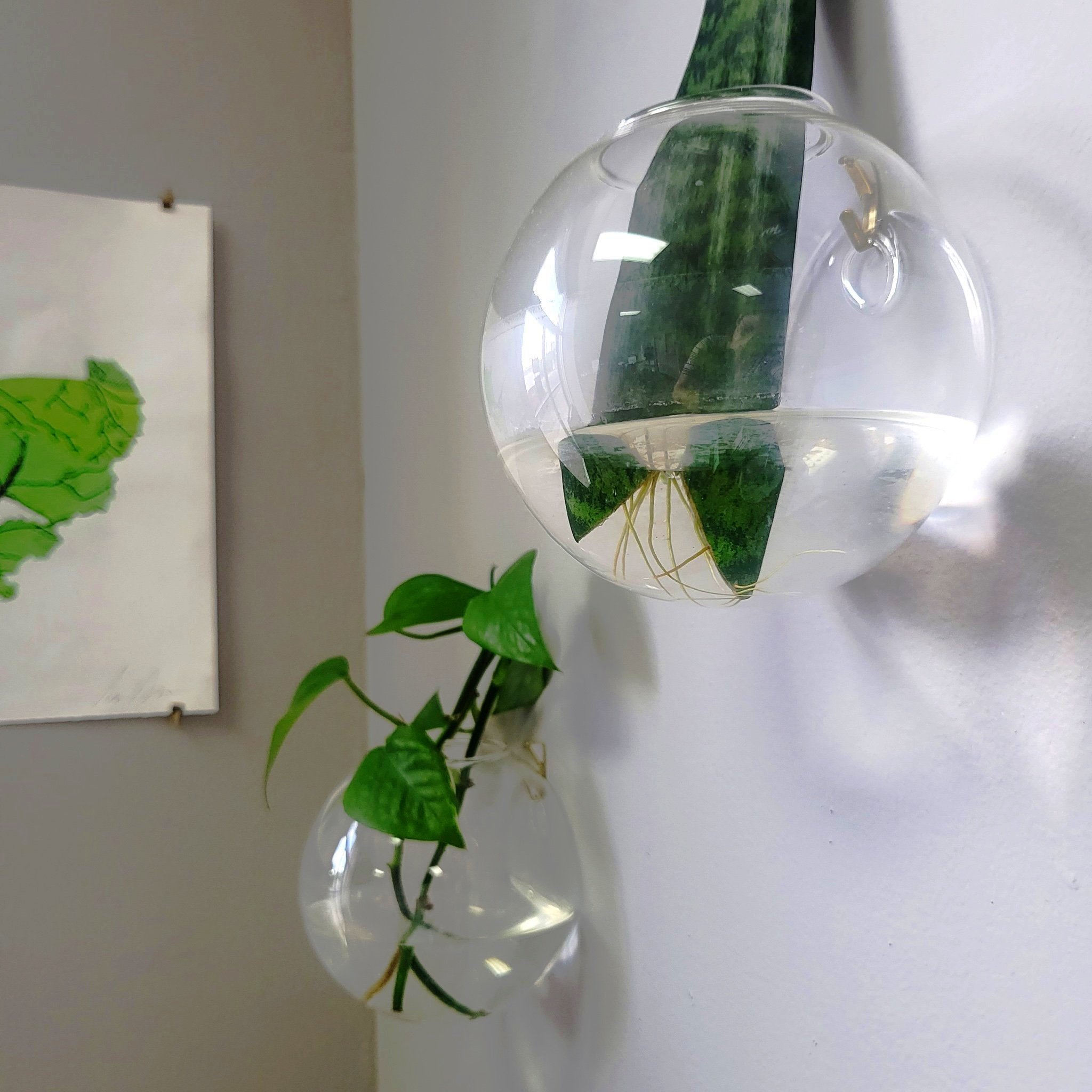A Beginner’s Guide to Propagation
The five methods of propagation are grafting, layering, cutting, seeds, & budding. However for the purposes of this guide, we’ll be focusing on cuttings and budding as those are most commonly used to propagate succulent plants. At our previous Newark Fern & Fossil location on East Kinney St, we had this beautiful propagation station where we placed our leaf and stem cuttings on the wall to grow new plants!
Let’s use the snake plant as an example for our first propagation method: leaf cuttings. To propagate a snake plant, cut at an angle to create an “arrow-like” base. Make sure your cutting is at least 6 inches tall, then fill your propagation container with about 3 inches of water or until you cover the base of your cutting. Once your container is ready, place it in a bright location with ample sunlight. After that there’s very little maintenance needed, just replace the water every one to two weeks until you see roots form. This process should take about 2 months, by which point you can repot the plant in a container filled with potting mix. We recommend adding a little more perlite to the soil if using a store bought mix to assist with drainage.
For our next example, we’ll be looking at stem cuttings and pothos plants. Pothos plants are one of my favorite plants to propagate through stem cuttings and they sprout roots pretty quick (certainly faster than snake plants)! To take a stem cutting, choose a healthy stem then cut from the tip of the stem at a 45-degree angle. When doing your cuttings for a pothos, make sure to not cut off the nodes along the stem as the node is where the new roots will grow. Once you have your cutting, place the cutting in a container with water and submerge it one inch above the node. Just as with the snake plant leaf cutting, change the water every 1-2 weeks until the roots are ready to plant. You should start to see small white roots form after just 2 weeks. After about one month, your cutting should be ready to be planted with roots about 2 inches long.
Lastly, there’s the budding method of propagation. For this we’ll use Sempervivum, or commonly called Hens and Chicks, as an example. These succulents (amongst others) will grow more of themselves through small offshoots that usually share a root system with the original plant. Although this method requires the least amount of preparation and work, one must be patient as it occurs at the pace of the plant. To propagate through the budding method, simply take good care of your plant (check out our Plant of the Month series for more information) and wait till the buds/offshoots are big enough to remove. Generally you want the offshoots to be at least an inch or two in diameter (for vertically growing succulent plants, it’s best to wait till they’re several inches tall) then use the same method you would for stem cuttings and cut where the offshoot meets the main plant. If the plants share roots, give the new plant more roots than the main plant. The main plant will reproduce roots much faster than the new one. Once you have your new plant, transplant it immediately to a new container and don’t water for a few days while it’s healing. This is a particularly good method for cacti plants!






